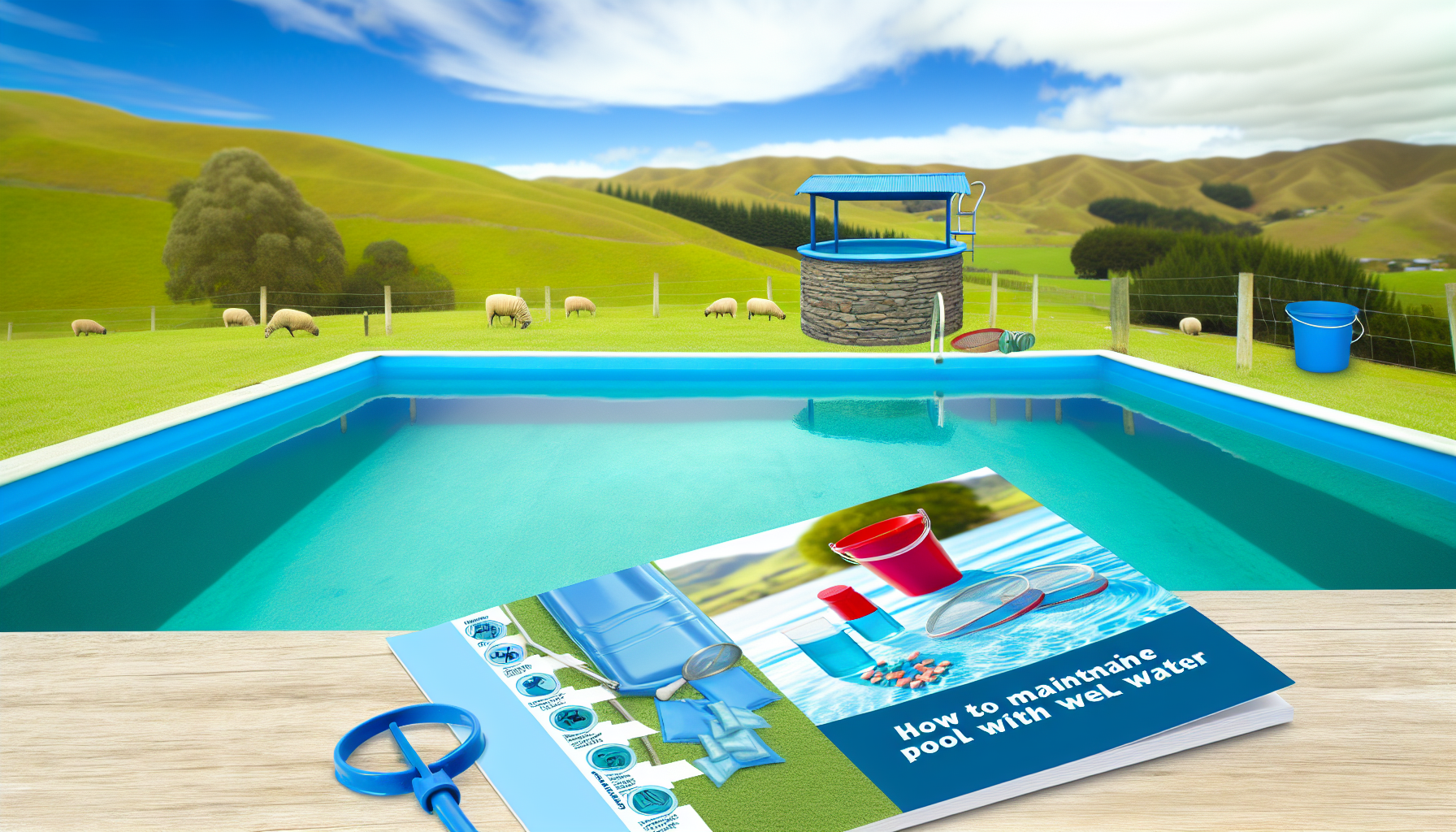If you’re using well water to fill your pool, you’ve probably noticed it’s not quite the same as regular town supply. Well water can be high in minerals like iron and manganese, and it sometimes has a different pH balance. If you don’t manage it properly, you can end up with cloudy water, staining, or even odd smells. But don’t worry—it’s completely doable with the right approach.
Test Your Well Water First
Before you do anything, get a water test kit from a local supplier like Burnsco or Mitre 10. You need to know what you’re dealing with—iron, manganese, hardness levels, and pH balance all play a role in pool maintenance. Some local pool shops like Pool & Spa Warehouse NZ even offer water testing services if you want a more detailed analysis.
Pre-Treat the Water Before It Goes In
Pouring well water straight into your pool can cause issues right away, especially if it’s high in metals. A simple trick is to run well water through a hose-end filter (you can find these at places like Bunnings or Placemakers) before filling the pool. This catches a good amount of sediment and helps prevent staining.
If the water is high in iron, you can also try the bucket method:
- Fill a bucket with well water.
- Add chlorine and let it sit for a few hours.
- If the water turns cloudy or brown, you know there’s iron that needs to be managed.
Get the pH Right
Well water often has a high pH, meaning it can throw off your pool’s balance. Ideally, you want your pool pH between 7.2 and 7.6. If it’s too high, add some pH reducer (available at any pool shop or online at swimmingpoolchemicals.co.nz). If it’s too low, use pH increaser.
Deal With Metals Before They Cause Staining
If your water test showed high iron or manganese, you need to use a metal sequestrant—a chemical that prevents metals from turning the water green or staining your pool. Look for a metal control product at Parasol Store NZ or The Warehouse’s pool section. Use it as directed, especially after adding new well water.
Shock the Water (But Do It Carefully)
Chlorine is essential, but if you add too much too fast to well water, it can react with metals and turn your pool brown or green. The trick? Add chlorine gradually and keep the pump running to help everything mix properly. If your pool does turn a strange colour after shocking, don’t panic—just add more metal sequestrant and let the filter do its job.
Filtration Is Your Best Friend
Because well water often has extra particles in it, your pool filter will need to work a bit harder. Make sure you’re using the right filter media—sand filters work great but need regular backwashing. Some people switch to glass filter media, which you can find at Trade Tested NZ. This lasts longer and catches finer particles.
Run the filter for at least 8–12 hours a day when you first fill or top up the pool with well water. If you’re dealing with murky water, a clarifier can help clump tiny particles together so they get caught in the filter more easily.
Keep an Eye on the Water
Once you’ve got your pool balanced, keeping it that way is much easier. Test the water weekly, keep an eye on metal levels, and clean your filter regularly. Using well water in your pool takes a bit of extra effort, but once you get into a routine, it’s no harder than maintaining any other pool.
So, if your pool looks great and stays that way, you’re doing it right. If you ever run into issues, most local pool shops in New Zealand are happy to help with water testing and advice. Happy swimming!


Leave a Reply